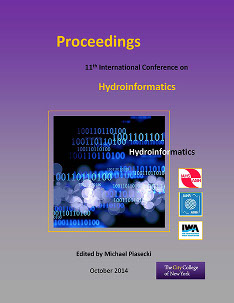Document Type
Presentation
Publication Date
8-1-2014
Abstract
In water distribution system (WDS) analysis, the initial stages of model assembling, which involve collecting basic WDS data (network topology, asset data, etc.), demand allocation and validation or correction of gross input data errors, are important precursors for calibration of the network. During these first steps one must define which model of the network is the most suitable one for a particular application, as the final results and conclusions usually depend on the model used to perform the simulations and provide the interpretation of the analyzed problem. Sometimes, it is not possible to make a proper choice based solely on the available information, because the experimental data, collected during the model building process, can be explained adequately by more than one model. In this case, one should perform new experiments for selection of one of the rival models. This procedure, called model discrimination, is a useful tool for selection of the best models to be used to represent a specific process. After selecting the best model among those available, one must calibrate the selected one, to determine various parameters that, when input into a hydraulic simulator, yield a reasonable match between measured and computed data. Experimental design procedures for model discrimination and for estimation of precise model parameters are usually treated as independent techniques. In order to conciliate the objectives of both experimental design procedures, the present paper proposes the use of a multi-objective optimization method for water distribution system analysis. Different models of an existing network have been compared and calibrated. As observed in the analyzed examples, the procedure provides the identification of the best additional experiments in the whole experimental field by the analysis of the Pareto frontier, leading to adequate model discrimination and parameter estimation simultaneously.



Comments
Session R51, Water Distribution Networks: Design Criteria